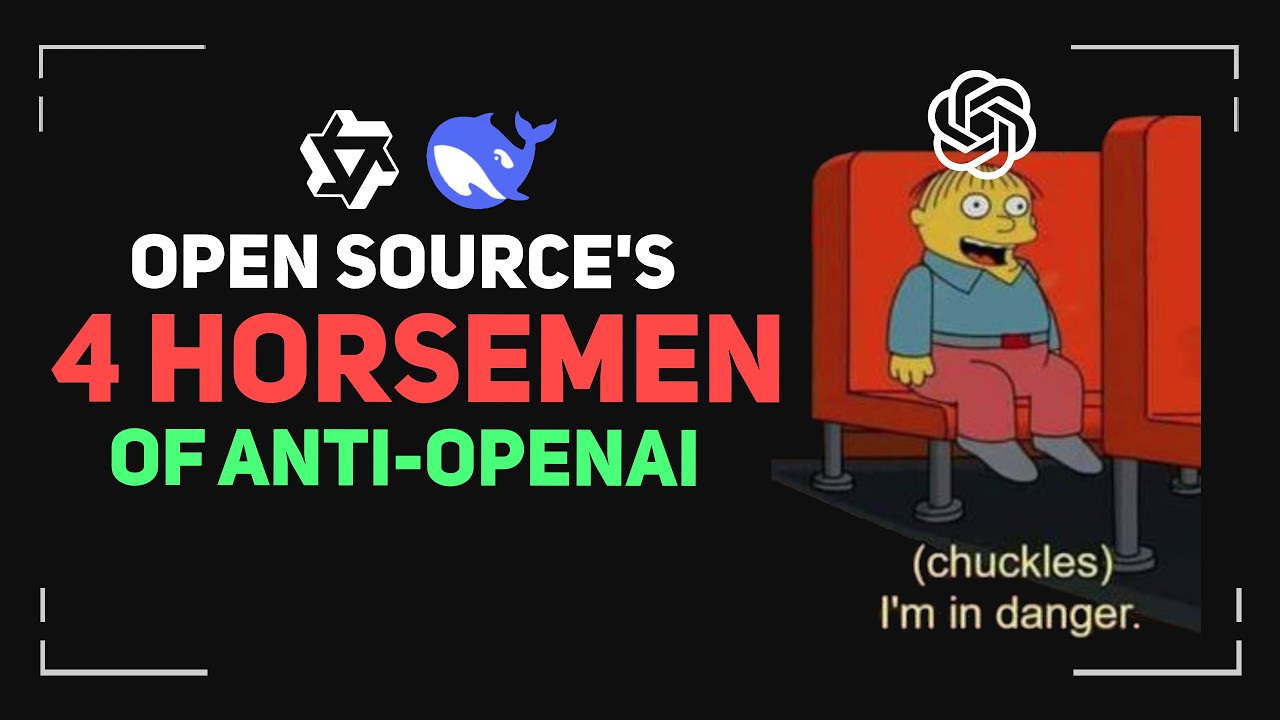The video discusses the emergence of open-source AI reasoning models, particularly Deep Seek R1, which are beginning to rival OpenAI’s o1 model, showcasing capabilities in transparency and reasoning processes. It highlights a shift towards enhancing inference time compute for better reasoning accuracy and introduces other promising models like Quill and Lava Chain of Thought, while also mentioning ongoing research to replicate OpenAI’s model through new training paradigms.
The video discusses the rapid advancements in open-source AI reasoning models that are beginning to rival OpenAI’s offerings, particularly the model known as o1. The narrator highlights that, despite OpenAI’s efforts to maintain a competitive edge, several Chinese reasoning models have emerged, demonstrating capabilities similar to o1. One notable model, Deep Seek R1, has been released with a focus on transparency in its reasoning process, allowing users to see how it arrives at answers in real-time. The narrator compares the performance of Deep Seek R1 with OpenAI’s models, noting that while Deep Seek R1 is still in its early stages, it has shown promise in certain tasks.
The video emphasizes the shift in AI scaling strategies from merely increasing model layers to enhancing inference time compute (TTC). This approach allows models to generate additional text tokens to refine their answers, potentially improving reasoning accuracy. The narrator shares a personal anecdote about testing the models with a simple reasoning question, revealing surprising performance discrepancies between the models. While OpenAI’s o1 struggled with accuracy, Deep Seek R1 performed inconsistently, prompting the narrator to question the reliability of these models in reasoning tasks.
The narrator explains that recent research suggests that many AI models, including o1, may rely heavily on intuitive reasoning rather than explicit step-by-step reasoning. This reliance on intuition can lead to inaccuracies, especially in complex tasks. The video discusses the benefits of explicit reasoning processes, which can enhance a model’s ability to tackle unfamiliar questions. The effectiveness of this approach is illustrated through comparisons of performance on math problems, where models employing explicit reasoning outperformed those relying on intuition.
The video also highlights other emerging models, such as Quill, which has shown impressive benchmark results despite being a smaller model with 32 billion parameters. The narrator notes that Quill’s performance in various tests has surpassed that of larger models, indicating a significant advancement in the capabilities of smaller, open-source models. Additionally, the video mentions the development of Lava Chain of Thought, a vision-language model designed to improve reasoning on visual data through a structured process.
Finally, the narrator introduces ongoing research efforts aimed at replicating OpenAI’s o1 model, specifically through a project called o1 Journey. This research explores new training paradigms and incorporates complex reasoning processes, such as trial and error and backtracking. The video concludes by encouraging viewers to stay informed about the latest AI research and developments, emphasizing the importance of following advancements in this rapidly evolving field.
